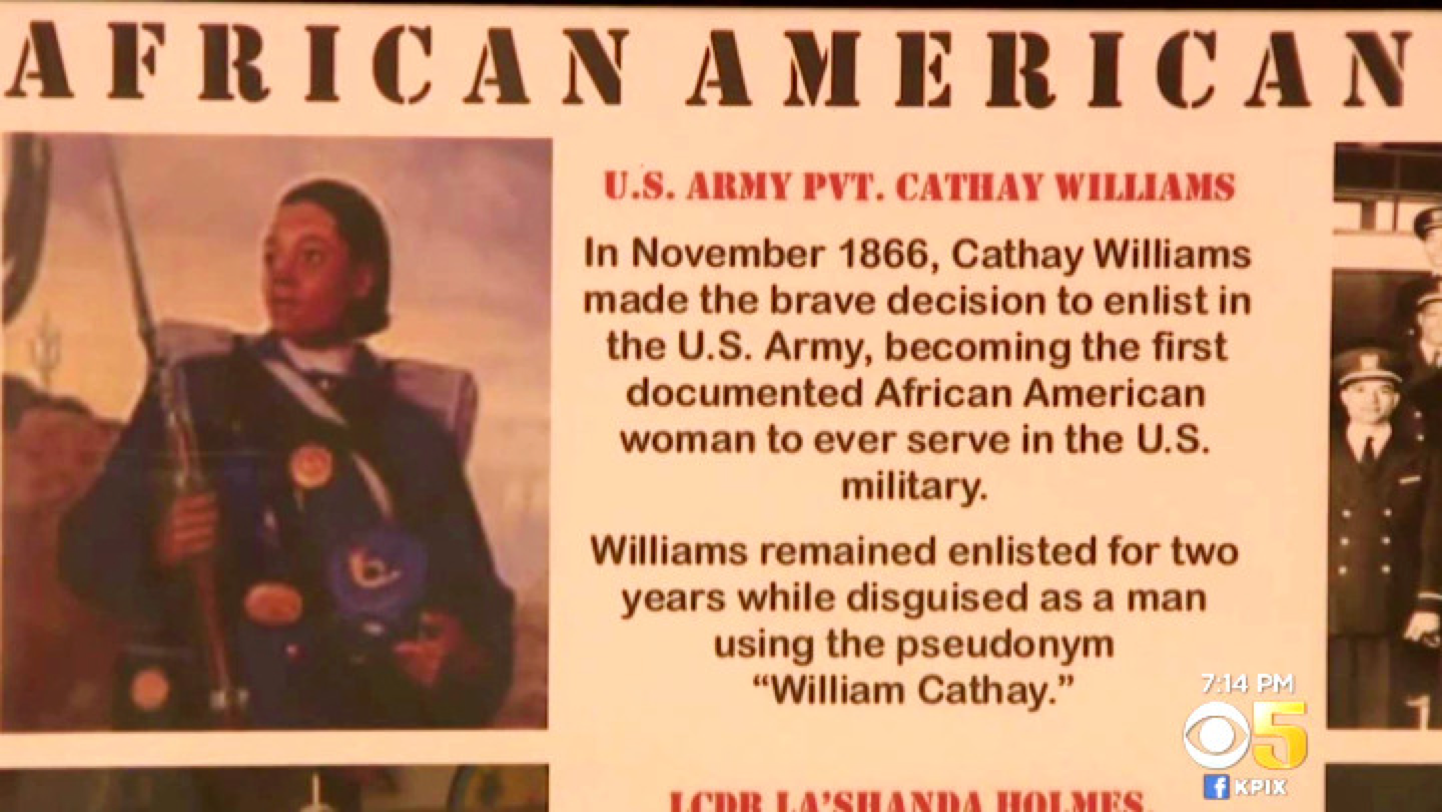ALAMEDA (CBS SF) — The U.S. military was the first American institution to full accept and integrate African Americans into its ranks.
As part of Black History Month, the USS Hornet Museum in Alameda is offering a special exhibit honoring African Americans who distinguished themselves in the military, but whose stories are seldom told.
“I’m like a kid in a candy store,” says Leon Watkins, as he enters the lower deck of the USS Hornet Sea, Air and Space Museum. “I mean, we get a chance to uncover history that most people have never heard of.”
His exhibit, entitled “Walking Ghosts of Black History,” traces the little known — and seldom taught — contributions of African Americans in the military.
Watkins’ journey as a historian began in 1989 when the Marine veteran was cast as a soldier in the movie “Glory,” about the first Black regiment during the Civil War. Since then, he has devoted his life to telling the stories of others.
You may have heard of “Dorie” Miller, a galley worker who manned a machine gun during the attack on Pearl Harbor. But there is also Cathay Williams, who disguised herself as a man during the Civil War to become the first Black woman to serve in the military. Major Robert Lawrence was chosen as a Mercury astronaut, but it was kept secret because he worked for the CIA.
“They all felt that by being the first, that they were opening the door for other African Americans and actually showing that it can be done,” says Watkins.
But sometimes history demands a sacrifice. Ronald McNair became the first African American to die in space, as a crew member of the ill-fated Challenger shuttle mission. And in our own Bay Area backyard was the Port Chicago Disaster, where 200 ill-trained Black sailors were killed in a horrific explosion at a munitions loading dock. Later, 50 sailors refused to work and were court martialed for mutiny.
“I believe anyone’s a hero that stands up to injustice,” says Watkins. “And that’s what these men went through.”
The Hornet Museum’s Executive Officer Laura Fies says museums are feeling a growing responsibility to portray American history in realistic terms, even when it’s unflattering.
“You should be in a constant state of improvement,” Fies said. “And I think history is a really good lesson to look at that and be, like, let’s see what happened, the good the bad and the ugly. Let’s acknowledge it and learn from it and grow.”
The “Walking Ghosts of Black History” exhibit will be on display Fridays through Mondays, until the end of February. Later, it will be made a permanent part of the museum’s collection.




